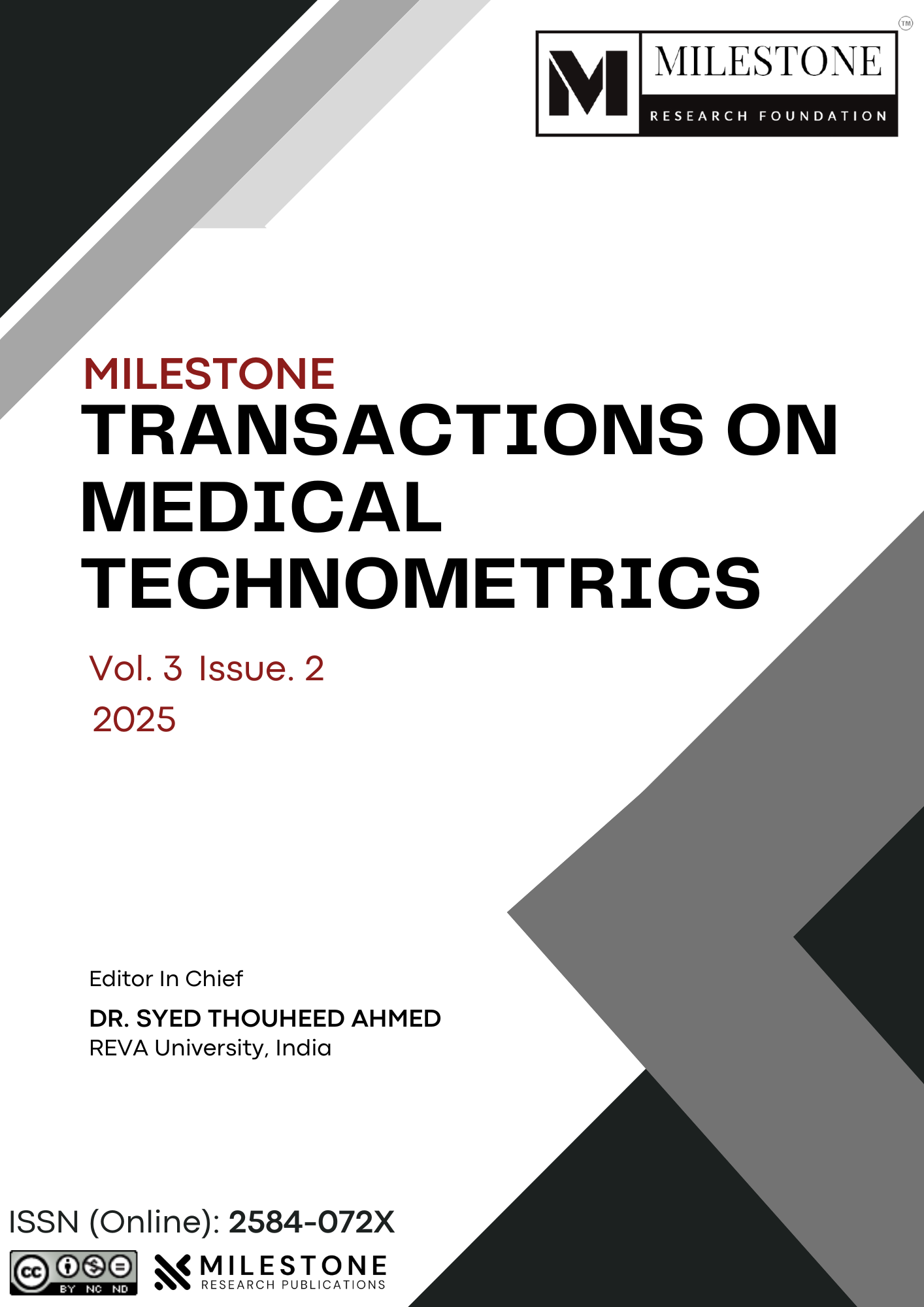Articles
Published 2025-04-23
Keywords
- Stress detection,
- heart rate variability,
- convolutional neural network,
- feature extraction
How to Cite
B K Preethika Raj, D Nithish, B Manjunatha, G Praveen, G Sandeep, & P Chandra Sekhar. (2025). Stress Monitoring With Heart Rate Variability Using Deep Learning. Milestone Transactions on Medical Technometrics, 3(2), 194–200. https://doi.org/10.5281/zenodo.15266886
Abstract
Prolonged stress can lead to mental health issues like anxiety and sleep disorders. Heart Rate Variability (HRV) serves as a key physiological marker for stress detection. Unlike heart rate, HRV measures the variation in time intervals between heartbeats (RR intervals). This study proposes a CNN-based model for classifying stress into no stress, interruption stress, and time pressure stress using HRV features. Evaluated on the SWELL-KW dataset, the model achieves 99.9% accuracy, outperforming existing methods. Feature extraction techniques, such as ANOVA, further validate the significance of HRV features in stress detection.
References
- Kim, H.-G., Cheon, E.-J., Bai, D.-S., Lee, Y. H., & Koo, B.-H. (2018, March). Stress and heart rate variability: A meta-analysis and review of the literature. Psychiatry Investigation, 15(3), 235–245.
- Muhajir, D., Mahananto, F., & Sani, N. A. (2022, January). Stress level measurements using heart rate variability analysis on Android based application. Procedia Computer Science, 197, 189–197.
- Held, J., Vîslă, A., Wolfer, C., Messerli-Bürgy, N., & Flückiger, C. (2021, March). Heart rate variability change during a stressful cognitive task in individuals with anxiety and control participants. BMC Psychology, 9(1), Article 44.
- Dalmeida, K. M., & Masala, G. L. (2021, April). HRV features as viable physiological markers for stress detection using wearable devices. Sensors, 21(8), 2873.
- Miranda-Correa, J. A., Abadi, M. K., Sebe, N., & Patras, I. (2021). AMIGOS: A dataset for affect, personality and mood research on individuals and groups. IEEE Transactions on Affective Computing, 12(2), 479–493.
- Won, E., & Kim, Y.-K. (2016, August). Stress, the autonomic nervous system, and the immune-kynurenine pathway in the etiology of depression. Current Neuropharmacology, 14(7), 665–673.
- Olshansky, B., Sabbah, H. N., Hauptman, P. J., & Colucci, W. S. (2008, August). Parasympathetic nervous system and heart failure: Pathophysiology and potential implications for therapy. Circulation, 118(8), 863–871.
- Goel, S., Tomar, P., & Kaur, G. (2016, March). ECG feature extraction for stress recognition in automobile drivers. Electronic Journal of Biology, 12(2), 156–165.
- Hegde, V. N., Deekshit, R., & Satyanarayana, P. S. (2013, June). A review on ECG signal processing and HRV analysis. Journal of Medical Imaging and Health Informatics, 3(2), 270–279.
- Vollmer, M. (2015, September). A robust, simple and reliable measure of heart rate variability using relative RR intervals. In Proceedings of Computing in Cardiology Conference (CinC) (pp. 609–612).
- Madapuri, R. K., & Mahesh, P. C. S. (2017, December). HBS-CRA: Scaling impact of change request towards fault proneness: Defining a heuristic and biases scale (HBS) of change request artifacts (CRA). Cluster Computing, 22(S5), 11591–11599. https://doi.org/10.1007/s10586-017-1424-0
- Ahmed, S. T., & Syed Mohamed, E. (2020, February). Phonocardiography (PCG) signal optimization and compression for low line transmission in telemedicine. In International Conference on Automation, Signal Processing, Instrumentation and Control (pp. 1127-1137). Singapore: Springer Nature Singapore.

